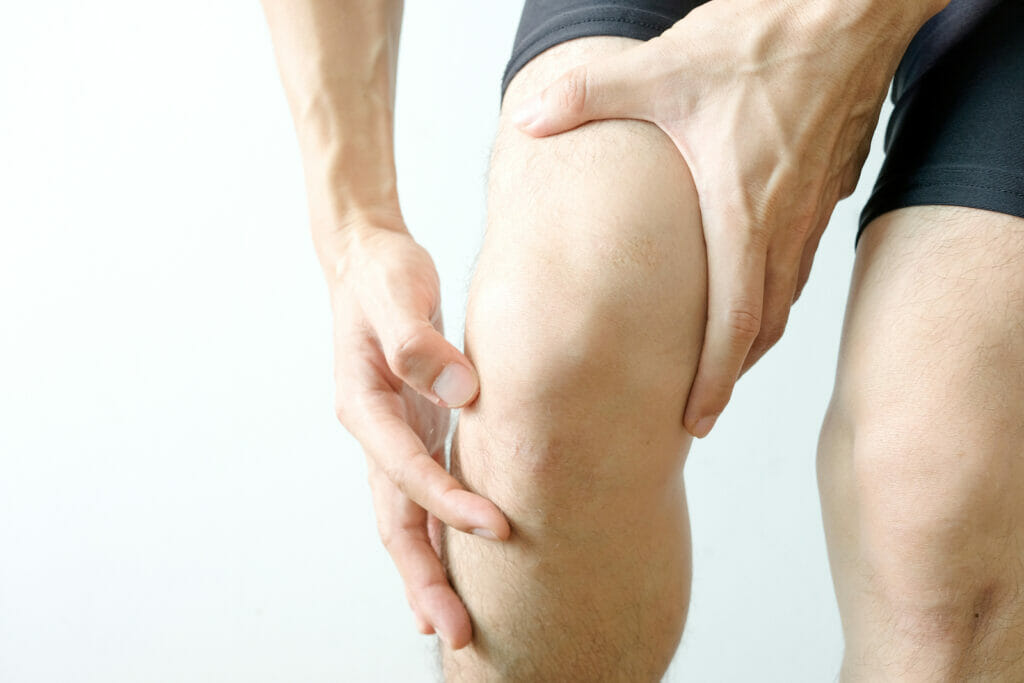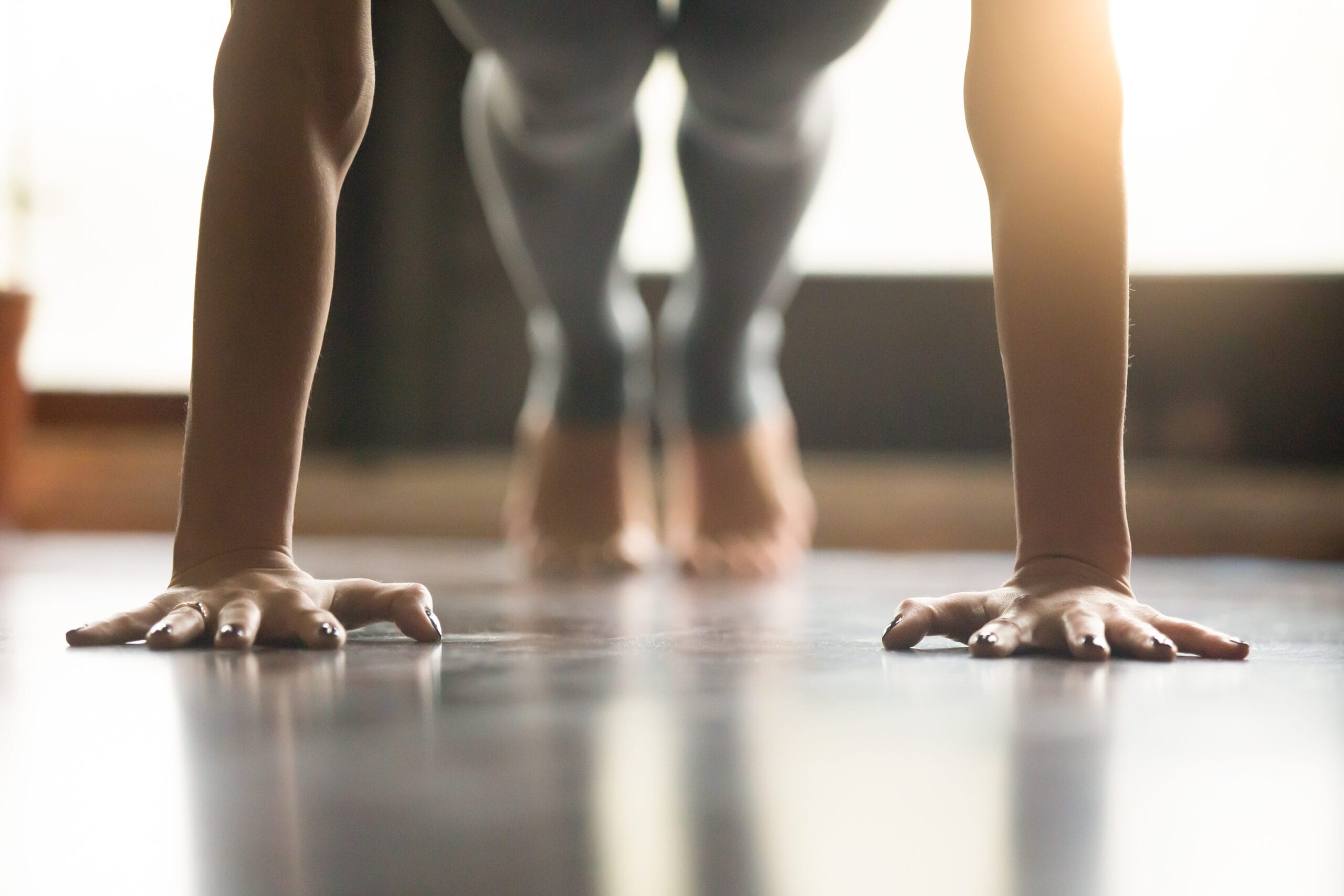
A lot of us deal with knee issues of one variety or another during our lives and they can be frustratingly debilitating.
It’s disappointing enough when knee pain limits our ability to exercise and progress in the gym, but it’s even worse when knee problems start affecting our abilities to get around.
And even though knee problems become more common as we age, younger folks can have to deal with these issues too.
Luckily, there are things we can do from home to treat current knee problems and help prevent them from coming back (or starting in the first place).
And as you probably guessed, exercise is a big part of this treatment.
But there’s a fine line between treating knee pain and making the problem worse, so it’s important to know which exercises you can safely do to start getting those knees feeling better.
And it just so turns out that’s what I’ll be going over here.
In this article, I’ll go over the best stretches and strengthening exercises most of us can do to help keep our knees in good shape – and luckily these exercises can easily be done from home and don’t require a lot of bulky equipment.
After reading, you’ll be well-equipped to start taking better care of those “bad” knees.
Well, let’s get started already.
What Causes Knee Pain In The First Place?
As a physical therapist, I’ve treated a lot of patients dealing with knee pain over the years and now that I work primarily in geriatric care, I see a lot of folks that are complaining of having “bad” knees, regardless of what I’m there to work with them on.
Whenever someone tells me they have “bad” knees, 9.9/10 it means they have knee pain (although I guess it could also refer to weakness or instability).
But in my experience, it’s usually pain to some degree.
Technically speaking, there are tons of different things that can cause knee pain, but for most of us who don’t have a traumatic accident, it really boils down into 2 categories: muscle imbalances or arthritis.
And honestly, from a therapist’s perspective, treating either is more or less the same.
Muscle Imbalances
A muscle imbalance refers to a situation where one muscle group is overly tight (or strong) compared to another muscle group.
And this can refer to opposite muscle groups (flexors vs extensors) as well as groups on different sides of the body.
Either way, when you have some muscles that are tighter and/or stronger than others, bad things tend to happen.
With regards to the knee, common imbalances occur between the hamstrings and the quads, where the quads are significantly stronger than the hamstrings.
Having really strong quads and weaker hamstrings can throw off your gait pattern, running pattern, and lead to patellar tracking issues or even back pain.
Another common imbalance occurs in the quads themselves, where you have a really strong vastus lateralis (VL) and a relatively weaker vastus medialis (VM).
This imbalance can cause the patella (knee cap) to start pulling more to the outside of your femur, leading to pain in the front of your knee.
This condition is incredibly common for folks of all ages, but the good news is that it’s usually very treatable.
Muscle imbalances at the hips can also lead to knee problems and a common example is to have tight/strong hip flexors and weaker hip extensors.
Arthritis
There are several different types of arthritis, but for the sake of this article, I’m mostly talking about good ol’ fashioned osteoarthritis (OA).
This type of arthritis refers to the breakdown of cartilage between joints, resulting in a “bone on bone” situation that disrupts the surfaces of each bone involved, thus causing stiffness and pain.
OA is also incredibly common and you can develop this in pretty much any joint in your body.
Common locations include the knee, hip, hands, spine, and shoulder.
Once OA develops in a joint, the only real “cure” is a joint replacement because all the stretching and exercising in the world isn’t going to reverse the degenerative effects that have already occurred.
But that doesn’t mean exercise can’t manage arthritis.
In fact, I’d argue that a lot of arthritis is the result of muscle balances to begin with – poor posture and tight muscles throw off the way joints are moving, thus resulting in breakdown sooner than it may otherwise occur.
I’d also argue that arthritis doesn’t always cause pain and even though you have arthritis, you can still be pain free (sometimes).
It all depends on your condition and what’s really going on to cause your discomfort.
Treatment
Regardless of what category your knee pain falls into, the treatment is more or less the same – stretching tight muscles and strengthening weak muscles to correct these muscle imbalances.
I might be oversimplifying things here a little, but as a therapist, that’s basically what we do in a nutshell.
When treating a condition like knee pain, we would learn as much as possible from your history and do a thorough exam to spot alignment issues and whatnot, but it mostly boils down to muscle imbalances.
Of course in reality, it’s a lot easier said than done.
In the real world, you have to do more than find the muscle imbalances – you also have to figure out why they’re there in the first place and find a way to correct ’em.
Often, muscle imbalances are the result of pattern that have been going on for a long time.
Postures, habits, etc lead to some muscle groups being tighter than others, so sometimes treatment involves trying to change these patterns.
But I better reign myself back in here before I get too far off track because we’re here to talk about specific exercises we can do to treat our knee pain from home.
But again, regardless of what’s causing your knee pain, the key is to release or stretch tight muscles and try to strengthen weak muscles.
And if you don’t know what muscles are tight and which are weak, that’s ok.
The following exercises will have most folks pretty well-covered.
Just keep in mind you shouldn’t feel knee pain while doing this (some discomfort while stretching or foam rolling is fine, but no severe pain).
If something really hurts, please don’t force your way through it. And when in doubt, always seek the guidance from your family doctor (or local physical therapist) before continuing.
The 5 Best Exercises For “Bad” Knees
#1. Quad Release
Quad stretching is helpful, but sometimes stretching doesn’t really work on stubborn bundles of muscle fibers that refuse to loosen.
That’s why I prefer foam rolling because it mechanically releases tight areas of the muscle, which can help improve blood flow and help normalize muscle imbalances.
You can use a foam roller to roll out your quads or you could use a small firm ball.
This involves lying on your stomach, so if that isn’t comfortable for ya, you could also try using a handheld massager while sitting upright.
Either method you use, the key is to locate the tight spots in your quads and to focus on these areas.
You’ll know you’re in the right spot because it will be painful.
It’s a good idea to roll out the rectus femoris (middle) section as well as the VL (outside of thigh) section for optimal results.
I like to roll for a couple minutes at a time, 2-3x/day depending on it feels.
#2. Hamstring Stretch
A lot of us have tight hamstrings, mostly due to how much time we spend sitting and not stretching, and when these muscles are tight, they can cause a lot of problems.
I mentioned briefly above that tight hamstrings can throw off the way we walk and run, leading to pain anywhere from the bottom of our feet to our spine.
So, if you’re dealing with bad knees, it’s a good idea to spend some time stretching out your hamstrings.
There are a ton of ways to stretch these muscles, so it’s all about finding a way that’s comfortable and effective for you.
I like to do sitting and standing variations and a couple of my favorites include the standing stretch in video above (although I like to do it on stairs so I can hold on to the rail) and the seated hurdler stretch.
Try to hold your stretch for 30 seconds or so and do 3-4 reps on each leg.
#3 Wall Squats
Isometric wall squats are a great way to improve strength in the muscles surrounding the hips and knees and since you aren’t moving, they’re usually fairly comfortable for most folks to complete.
When doing wall squats, make sure your feet are far enough away from the wall so that your knees don’t go past your toes and remember to keep a nice wide stance (little wider than shoulder-width).
You can also play with how far down you go, depending on pain level/strength – the farther you squat down, the harder is.
You can progress this exercise by holding longer or squatting deeper, but keep in mind you shouldn’t be feeling pain while doing this.
Shooting for 15- 30 seconds is a good place to start. See if you can progress to 60 second holds.
#4 Lateral Walks With Resistance Band
I like this exercise because it’s working a lot of different muscles at the same time.
This one especially hits the glute medius, a primary hip abductor which is largely responsible for stabilizing our pelvis as we walk.
And having weak hips can contribute to knee pain, throwing off our gait pattern while walking, running, jumping, or doing any other kind of physical activity.
Of course, this exercise also works your quads, hamstrings, and gluteus maximus too.
In other words, it’s working just about every muscle from the hips down.
And I like that it’s working the quads and hamstrings together at the same time, something that’s helpful for improving knee stabilization.
When doing this move, make sure to keep your feet nice and wide and keep those hips back so that your knees don’t inch forward in front of your knees.
Using sets of 10-15 ft on each side is a good place to start and you can progress things by using a heavier band.
#5 Swiss Ball Leg Press
This one’s an oldie but a goodie.
We used to use this exercise all the time back in my orthopedic days and it’s still a great exercise for working on knee stabilization.
It’s also a safe exercise to perform, putting little stress through the knee.
To do this move, you need a Swiss ball, but you could also use a BOSU ball or anything else with an unstable surface.
Just place the ball against a wall, lie down, and place your foot in the middle of the ball.
Simply push your foot into the ball as hard as you comfortably can, while keeping the ball stable – the ball shouldn’t be moving much as you do this.
Hold for 10 seconds, relax, and repeat 10x.
I like to keep more knee flexion than the above video shows, preferably around 90°, but feel free to play with knee positioning to find one what works best for ya.
Final Thoughts
It was hard narrowing this list down to only 5 because there are tons of exercises we can do to strengthen and stretch the muscles around our knees.
But as I look back at them, I stand by my choices here.
The above exercises are all safe to do, easy to perform from home, and require little equipment.
And they also target the major muscles usually involved with achy knees.
When exercising, keep in mind that you shouldn’t be feeling a lot of pain while doing these – well, the foam rolling will hurt, but that’s supposed to.
You shouldn’t be feeling any severe joint pain or lasting pain after any of these and if you do, please stop doing them and consult a physician.
And don’t forget about helpful treatment tactics like icing, elevating, and rest – sometimes the best medicine is just taking it easy for awhile.
Otherwise, I hope you found this article helpful and if you have any questions, feel free to leave a comment below.


